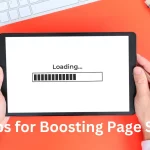
You dedicated time and effort to crafting valuable content and promoted it across social media platforms, only to find it hasn’t performed as expected on search engines.
So, where does the blame lie?
Are search engines at fault, or could it be that the content wasn’t quite up to mark?
Such questions might be swirling in your mind, especially when your content fails to make an impact. If you’re facing this issue, you’re not alone, and this article is made for you.
In the following sections, we’ll explore 7 practical tips on content optimization that you can apply immediately to enhance your content’s performance and visibility.
Let’s get started!
Is Your Content Aligned with Search Intent?
The first step is to determine whether your content matches the search intent.
What is Search Intent?
It’s unlikely that anyone randomly searches for information without a purpose. Search intent refers to the underlying reason behind a search query. Essentially, every search is performed to obtain an answer or to dive deeper into a topic for better understanding.
If your content does not fulfill this purpose or has an altogether different intent, then probably you won’t even rank for this query.
Consider the perspective of search engines. Platforms like Google aim to retain and understand their users over time by collecting data on their preferences and behaviors. This data then helps in presenting more relevant advertisements to users, thereby generating revenue. Therefore, if your content does not effectively address the user’s query, it may lead to quick exits from your page.
Such exits signal to search engines that your content might not be engaging or relevant enough to hold the user’s attention. Today’s search engine algorithms are highly sophisticated and can easily assess whether a page is capable of maintaining user engagement.
How to understand the intent of a keyword?
Google, is probably your best friend here. The top results can let you know what is working at the top.
For instance, if I search for “what is SEO”, I will pop up with the top results that show the intent of the informational keyword.
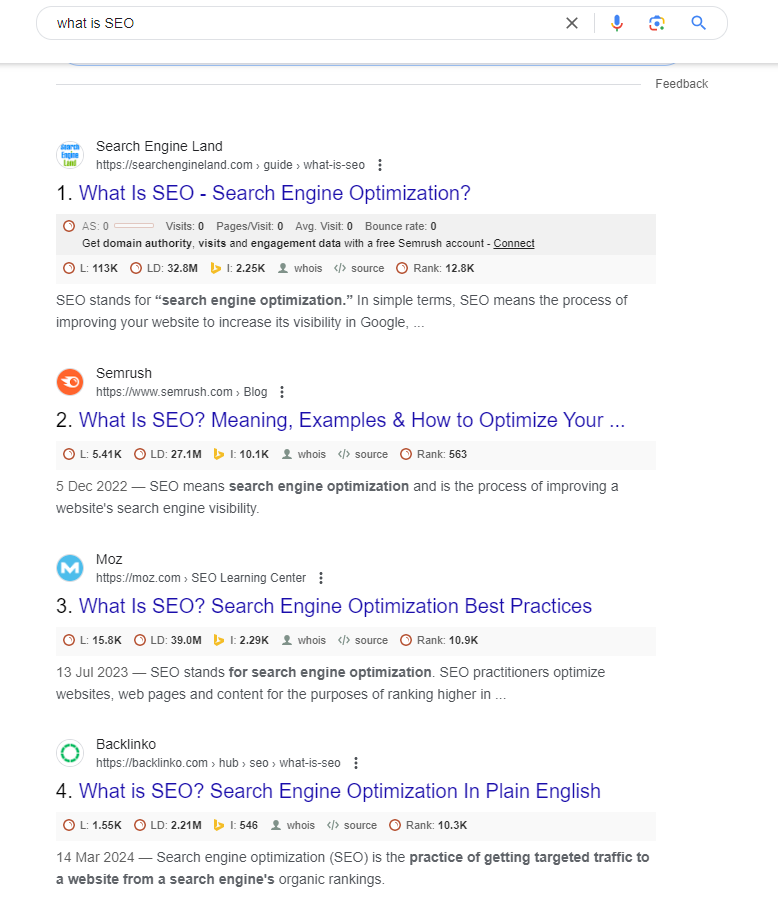
Scan through at least the top 10 results, and see what is working with them. See what’s common, however, you should provide something of extra value. Copying their content won’t work here.
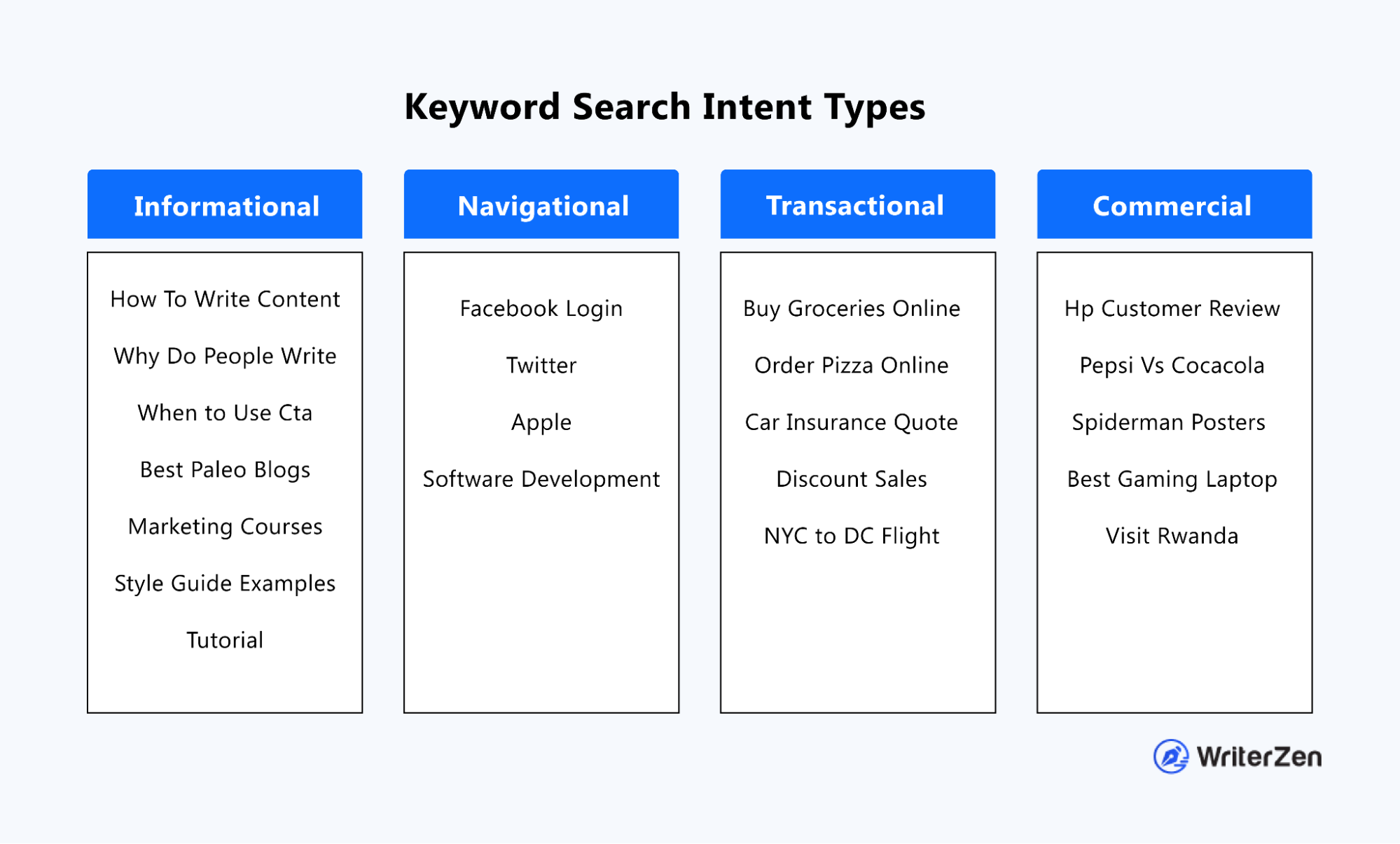
Here’s what you can do to create the content with the same intent and add more value:-
- Change the angle of the content. For instance, if everybody is writing on “what’s working in SEO” you can write content with a different angle “What’s not working in SEO”
- Make actionable tips “9 Tips to get started today with SEO”
- Give expert advice on future trends based on your experience.
- Share internal reports, that can help the industry.
There can be many more ways, in which your content can take a different shape than what is already there on SERPs. However, make sure you align your content with the search intent.
Optimize the website text
Optimizing the text on your website is crucial, especially for landing pages that funnel users to other content pieces. Effective text optimization involves several key elements:
Title Tags: Title tags are critical for SEO and user engagement. Enclosed within the HTML <title> tag, they succinctly convey the subject of the page. Title tags are not only pivotal for search engines, which display them as the clickable headline for entries in search results, but also appear in browser tabs and when shared on social media. This makes them an essential tool for accurately representing your content across various platforms.

Meta Descriptions: These brief descriptions appear under the title tags in search engine results and play a significant role in attracting clicks. A compelling meta description should summarize the page’s content, incorporating relevant keywords to improve visibility. Avoid vague descriptions like “Welcome to our page” that provide little value to users. With most search engines displaying around 150-160 characters, it’s important to be concise yet descriptive enough to encourage clicks.
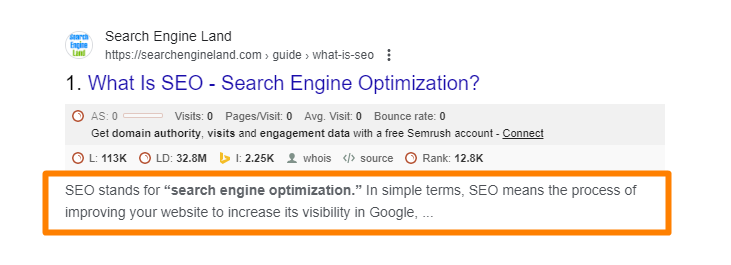
URLs: The structure of your URLs should be straightforward and keyword-rich, enhancing both search engine understanding and user experience. Incorporating relevant, and possibly long-tail, keywords can make your content more discoverable to users conducting specific searches. This ensures your URLs are not only functional but also informative, reflecting the content of your page.
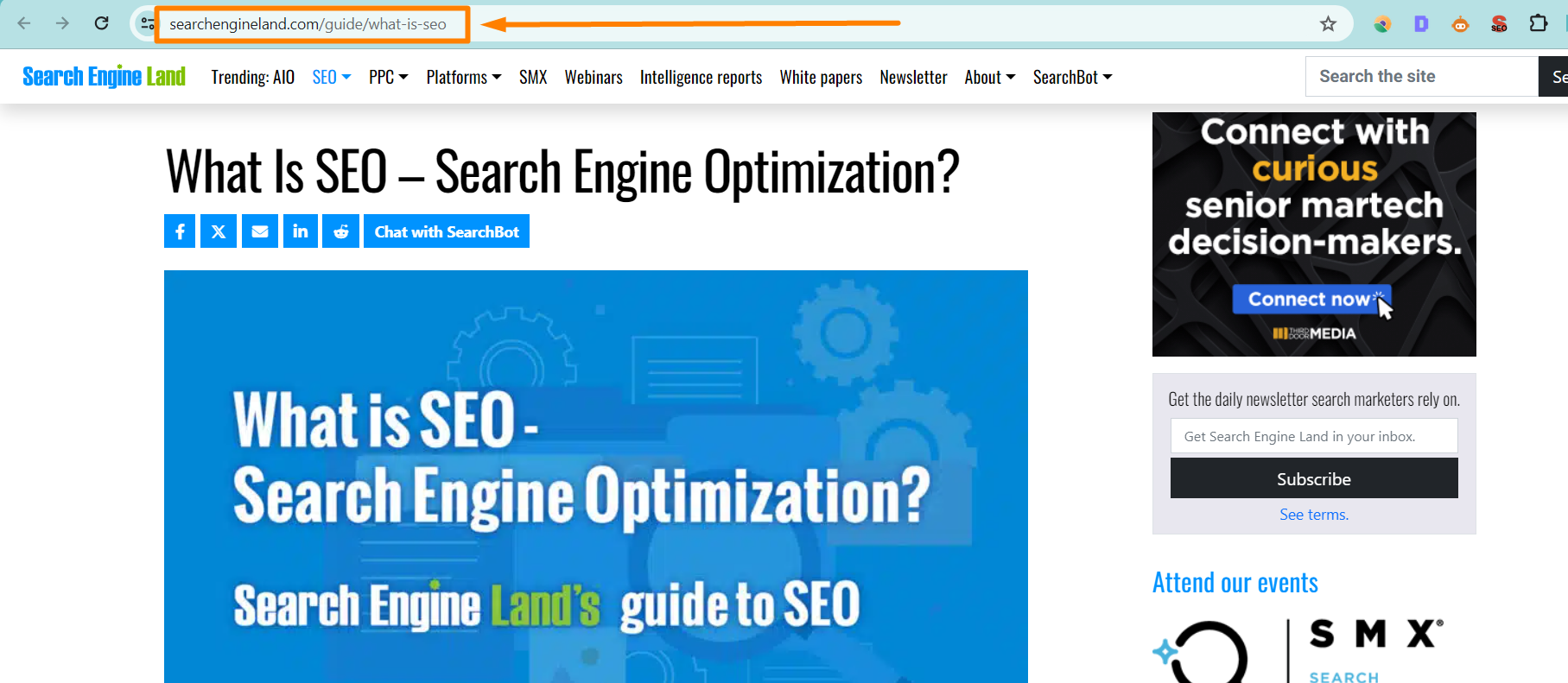
By focusing on these elements, you can significantly improve the visibility and effectiveness of your site’s content, making it more accessible and appealing to both search engines and users.
Improve Internal Linking
Internal linking is a crucial aspect of your SEO and content optimization strategies that you have complete control over. This technique can significantly boost your website’s rankings.
Internal linking involves using hyperlinks in your content that navigate users to other pages, content, or areas of your brand’s online presence.
By creating a cohesive linking structure that interconnects various parts of your website, you enhance the ability of search engine bots to crawl through your pages more effectively. This not only improves the indexing of your site but also distributes page authority across your site, strengthening your overall domain.
Read More: A Comprehensive Guide on Internal Linking
Ensure The Technical SEO
No amount of content optimization can compensate for a website that falls short of technical standards. Technical optimization is a vital component that works together with on-page and off-page SEO strategies. As the name suggests, technical SEO is considerably more intricate than on-page optimization.
To begin enhancing your site’s technical health, start with a basic diagnostic using tools like Google PageSpeed Insights. This will assess how quickly your site loads and highlight any major issues that need attention.
Moreover, it’s essential to ensure that your site is properly indexed and accessible for Google to crawl. To address all the technical aspects thoroughly, follow our detailed technical SEO audit guide, which will help you bring your site up to speed efficiently.
Optimize Images
Images not only make your articles more engaging but also improve your chances of ranking well. The effectiveness of images hinges on their relevance and ability to keep your audience captivated. However, there’s more to using images than just their aesthetic appeal.
Whenever possible, include your screenshots. This not only builds credibility with your audience but also cements your authority in your field. Avoid using images merely to fill space; they should reinforce your message, add value to the content, or entertain.
Be mindful of the number of images you use. An excessive number can slow down your page load time, negatively affecting your SEO. To manage this, compress your images using any of the free tools available online, aiming to keep file sizes around 100kb. Exceptions can be made for hero images and infographics, which may be larger due to their importance.
Tip: Use Google PageSpeed Insights to check your page’s loading speed. If it’s slower than desired, ensure your images are optimally compressed and not overly abundant. Consider implementing SEO-friendly image optimization strategies to further enhance your site’s performance.
Use Videos wherever possible
Just as with images, it’s essential to adhere to best practices when incorporating videos into your content. Relevant videos not only break up text-heavy content but also cater to different learning styles and preferences, potentially increasing user engagement.
It’s important to note that if you use a video player that does not auto-play videos, file size is less of a concern due to streaming. However, if you choose to host videos directly on your server and embed them into your site, be mindful of file sizes as large videos can significantly affect page load times and, consequently, SEO.
Prioritize Users above Search Engines
Ultimately, the most important factor in creating and optimizing content is your audience. To truly resonate with them, you need to think from their perspective. Consider whether your article addresses the queries that led them to your site. Does it provide value that can potentially enhance their lives or answer their questions effectively?
After crafting your content, take a moment to reflect: Is this piece something you would be proud to associate with your name or your brand? Ensuring that your content not only meets SEO criteria but also stands as a testament to your brand’s values and quality can make a significant difference in how it is perceived and valued by your readers. This approach not only improves engagement but also builds trust and loyalty among your audience.
Conclusion
Optimization is an ongoing journey, not a one-time task. Rankings and campaign performances can fluctuate, making it crucial to continuously monitor and update your content as needed.
Fortunately, there are tools designed to streamline your optimization efforts. Utilize our keyword research tool to save valuable time on research, allowing you to focus more on refining your content and expanding your business. By staying proactive, you ensure your content remains effective and your business thrives in this competitive space.
Adam White
Posted on April 15, 2024
Adam White is a 20+ year SEO professional who has optimized over 400 websites, built and sold over 20 internet and SaaS businesses all with SEO as the main traffic source. Follow him on Twitter/X



